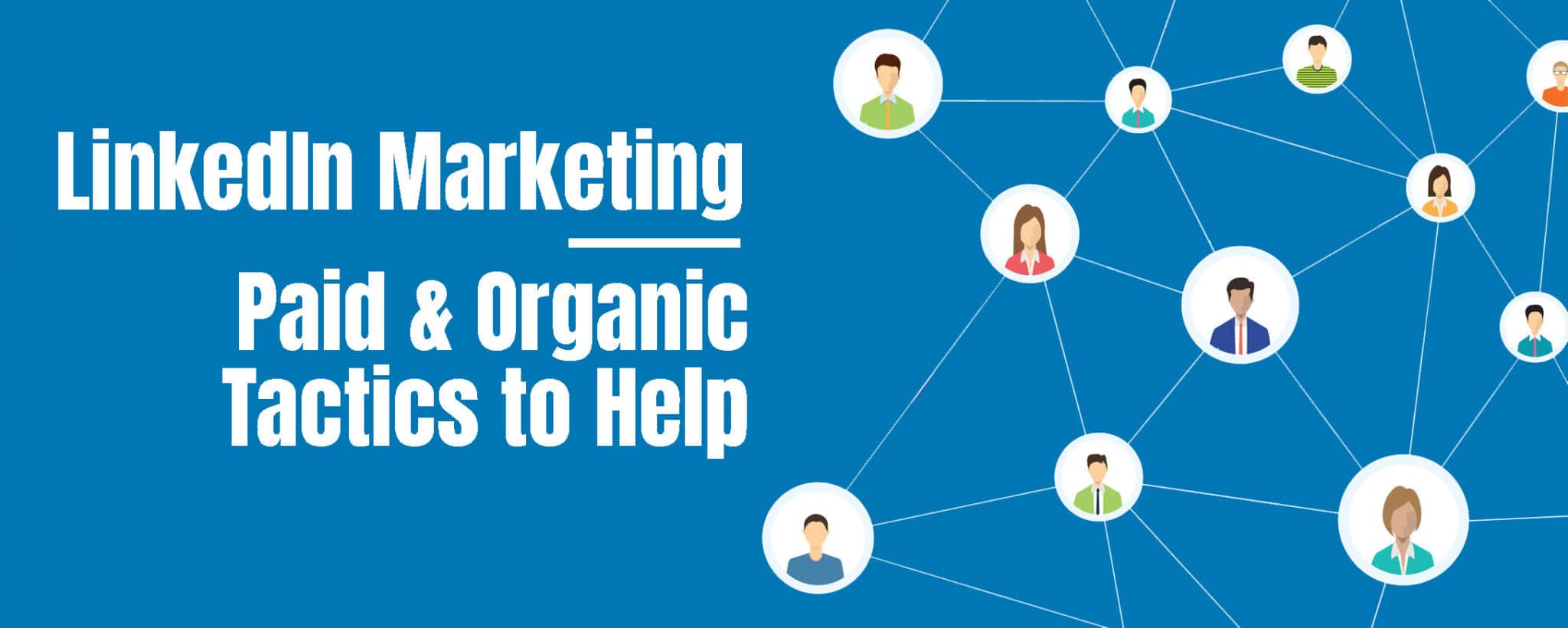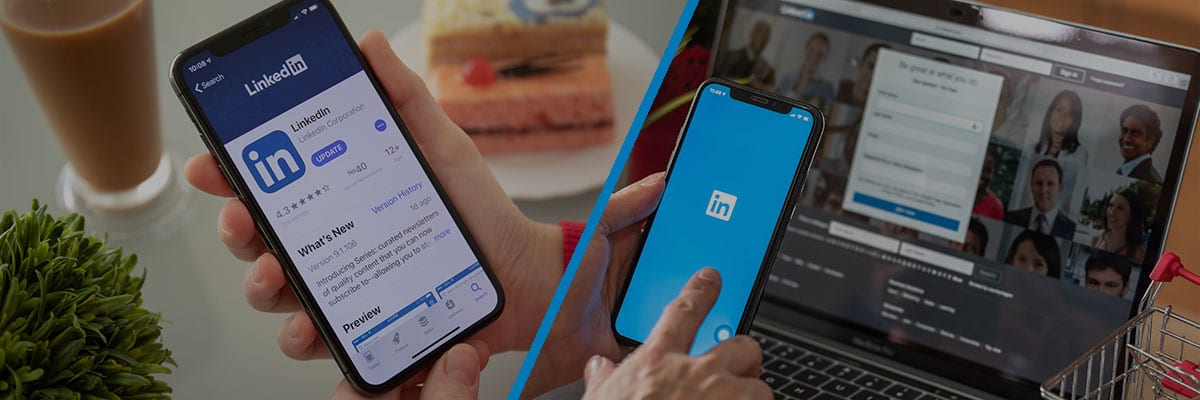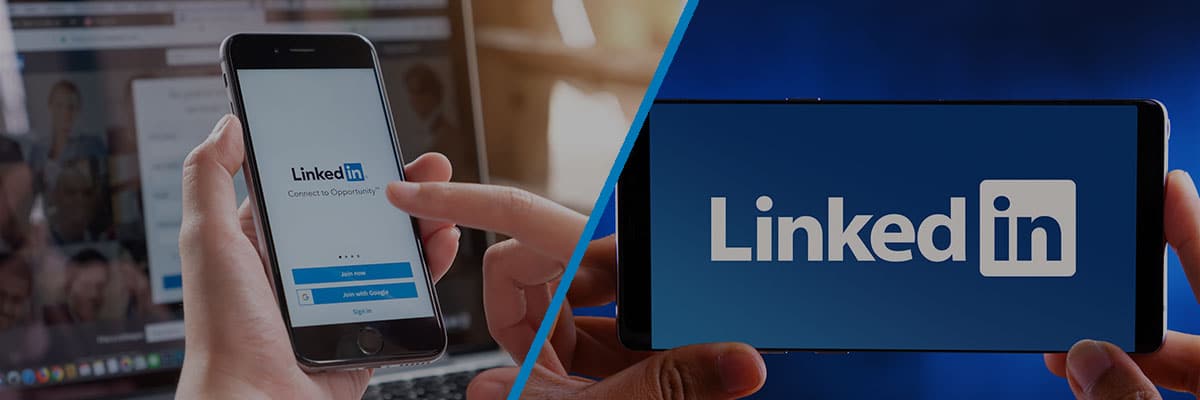
What do you think of when you hear “LinkedIn”? Maybe just another social media site that you tend to use from time to time. Maybe you use it to post some articles or read up on some business news, just to keep a little updated with what’s going on.
Or…
Maybe, just maybe, you utilize the totally awesome power of LinkedIn to acquire new leads to help in your marketing efforts.
Like it’s contemporaries, LinkedIn can be a great tool for your marketing efforts when utilized in the proper way. This doesn’t mean bombarding random people/businesses with messages about your service. Instead, like any good marketer, you are wanting to target a specific audience that is IN NEED of your help (you know, like people that are actually looking for help). The question that looms is how are you going to find said people? This is not going to be the easiest task in the world but it’s better than creating a bad reputation for yourself online as a spammer that doesn’t try to help anyone but rather the business to avoid.
Given the fact that LinkedIn has about 300 million active users (roughly 40% of those users get on daily) then you’re going to want to maximize your ability to attract business rather than bombarding those that don’t want it. The question remains the same though, how is it that you attract people to your profile or find people that are actually looking for your kind of services? The answer is that there are two ways to approach it, organically or paid. We’ll cover both here in this post but, as always, paid is going to be the best way to get in front of the right people quickly. That’s not to say that it is more effective than organic, actually organic marketing on LinkedIn is far more effective (like most platforms) but requires a ton of energy and time so it’s really up to you and your business as to how you want to approach it.
LinkedIn Marketing
Organic & Paid
Organic

Optimize Your Profile (Including Keywords in Header)
This is going to be the first thing you’re going to want to do. Optimizing your profile is going to parallel the many practices of SEO being that you’re going to have to figure out which keywords your target audience would be searching. You’re going to want to focus on this in your headline mostly, adding specific keywords that are industry specific that potential clients would search for. You’re also going to want to optimize your profile for your experience so that when people have done a search and your business comes up, you have the experience listed to prove that you are the business that they’re looking for.
Post Frequently (Videos If Possible)
This is a bit of a debated aspect being that there’s no established amount of times you want to post so the best idea is the more the better. It really depends on your time constraints and the size of your business. If you’re running a business with 5 people and that doesn’t include a writer then chances are your time is pretty short so getting a few posts up a month is going to be what you’re aiming for with the eventual idea in mind that you want to increase that as much as you possibly can up to once a day. Along with this you’re also going to want to consider if it is in your budget to create video posts. This is the most in demand type of content out there. There’s just something about the human aspect of a video that really engages people and makes them want to find out more.
Relevant Hashtags
These are still pretty new to LinkedIn but if you’re familiar with any other social media platforms then you have an idea of what to do here. In the case of LInkedIn you are going to want to be somewhat conservative being that hashtags are so new. Try keeping them to maybe 2 or 3 at the most and making them industry relevant. Keep in mind that this isn’t Instagram and is more business professional so limit it to what people might be searching for.
Interact In the Comments
This is a big one. No one is going to be interested in coming back if you just seem like a robot that doesn’t care about the generous people that are taking time out of their day to show you support. You’ve got to let people know that you appreciate their support by commenting back on their comments. Even if it’s something small, it is a great way to show appreciation and to engage someone in an honest conversation about their opinion on matters. Even if it differs from yours, it allows for the possibility of getting to know your fan base and possibly expand your own opinion which could help with other follow up pieces or just ways to introduce new concepts to content you’ve already created.
Interact With Your Industry
When I see interact with your industry, I mean joining groups within your industry. By doing this you’ll be able to communicate with those in the industry to borrow from their experiences to see what works and what doesn’t. This will also allow for you to go through posts to see what topics are trending, so to say, and will allow for you to come up with even more content ideas without having to go through a bunch of tools.
Paid

More than likely, you’re familiar with Facebook, Instagram, and Google advertising but did you know that LinkedIn is an incredibly effective tool for paid advertising as well? It’s probably not the first name that comes to mind but after reading some of the statistics about you might start to think otherwise.
Check out these facts about LinkedIn advertising from Sprout Social:
Just looking at those facts you can see that LinkedIn is actually a very effective tool when it comes to building up your business. Being that these are coming from the mouths of actual marketers then you know there’s something to it, especially seeing how many senior level positions readily use LinkedIn for their companies’ strategy, it makes it even more appealing.
More than likely if you’re reading this then you’re not too familiar with LinkedIn advertising but don’t feel too bad, it seems more common that people advertise on Facebook or Google. There’s nothing wrong with those tools by any means but you could be missing out on quite a bit of opportunity just by shrugging off LinkedIn because it’s not your classic social media advertising platform. Nonetheless it’s best for you to familiarize yourself with advertising on the platform whether or not you are a marketing professional or the CEO.
I’ll go over the critical steps you need to know when it comes to setting up your LinkedIn advertising campaigns.
Familiarize Yourself With Campaign Manager
Like any tool, you’re going to have a home screen where you’re going to manage the various ads you created. For LinkedIn this is the campaign manager. You’re going to have to get started by signing up for an account here. From there you will use the campaign manager for everything from creating your ads to analyzing the campaigns to see how to improve them. Everything you need to create and redefine your campaign ads can be found here. It will be worth it to spend some time exploring the campaign manager to get an idea about it all works before diving in completely.
LinkedIn Ad Format
When selecting your ad format there are three different types of ads you can choose from: Sponsored Content, Sponsored InMail, and Text Ads. To be clear, you have the option to mix them up as well so it’s not just choosing one type and sticking with that forever. I’m sure the immediate question that comes to mind is what type is the best to use? Well, it depends on what you’re advertising exactly. Sorry for being intentionally vague but it’s like any advertising platform, it’s a case by case basis when it comes to ads. It all depends on whether you’re advertising a service, an occasion, a product, etc. From there you then have to see what the numbers on your various campaigns are and decide which avenue to pursue in accordance with what was successful. What I can do is explain the different types of ads so you at least have an understanding of where to start.
Sponsored Content:
Sponsored content are advertisements that appear directly in the feed of the type of professionals that you are wanting to advertise to. If anything, imagine this as a quick preview with a quick headline that you can add a nice looking picture to. The idea here is to create an advertisement that will quickly catch someone’s eye to draw them in and click on it.
Sponsored InMail:
As you can probably gather from the name, these are ads that are sent directly into users’ InMail, meaning you can create personalized ads for your target audience. Being able to create personalized messages provides a great opportunity to give your clients the feel of what you can provide with your unique services. This is also a great opportunity for some split testing to see what works and what doesn’t without having to go through a ton of clicks.
Text Ads:
Text Ads offer a great opportunity to create eye-catching ads that you can create really quick and easy. Just get some appealing text setup and that’s just about it. The nice part about Text Ads is that you can pay per click so if your campaign isn’t that effective then you won’t have to pay a ton of money for something that didn’t work.
Creating Ads, Targeting Ads, & Setting Up Your Budget
When it comes to creating the ads you’re going to have three different options as mentioned just above.
Sponsored Content will give you the option to either choose an update from your company page to sponsor, choose an update for your showcase page to sponsor or create new sponsored content. It’s up to you how you want to build your sponsored content but you’re probably going to want to at least start with multiple variations to see what works.
Sponsored InMail is pretty simple. You choose who to send to, add a subject, add a message preview, and then create your message. Make sure when you’re creating your message that you get to the point. Remember, this is a business platform for professionals so be courteous of their time and let them know how you can help them with their business needs. This is where the experimentation can come in handy. Work to craft a great message over time that will be the most effective.
Text Ads are pretty standard, add an image, a headline, a description, and a destination for when people click on your ad. This can be an external website or your company LinkedIn page, whatever you think could yield the best results. You can create up to 15 Text Ads so experiment for the best results.
Audience Targeting is going to be a lot like Google audience targeting if you’ve done that before. If not, essentially what it’s going to come down to is you will get a wide amount of options to select your audience. Once you start to choose options, you will start to filter it more and more, getting even more narrowed suggestions along the way. A nice piece of this is the audience expansion aspect which allows you to include audiences similar to what you’ve chosen.
When it comes to creating your budget you get three options: Cost Per Click, Cost Per Impression, and Cost Per Send. Cost Per Send is for Sponsored InMail and costs you every time a message is successfully delivered. Cost Per Click can be used to either of the other two campaigns and depends on how often people interact with your content. This can be especially useful in cases where you want to drive people to a specific page to sell something like a product or your services. Cost Per Impression is more of a brand awareness thing, meaning, if you just want to get your name out there and get people to start remembering your brand then this will be the option for you because the idea would be to get the most people possible to see it rather than having people interact with it.
Optimize Your Campaign
From here all that’s left is to measure your results. You’ll have to go into each individual campaign to see it’s results but when you’re looking through each one you’ll be able to see overall performance, as well as, how it’s performing as it relates to social actions and budget. After spending the time to go through each campaign, click through to each campaign to see how each ad within the campaign is performing. Using this data, you can edit your ads, refine your targeting, adjust your budget, and toggle ad variations on and off based on performance.

